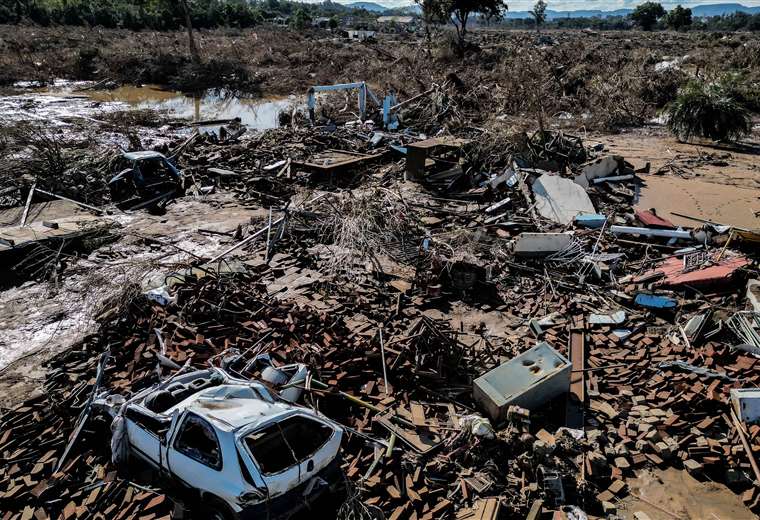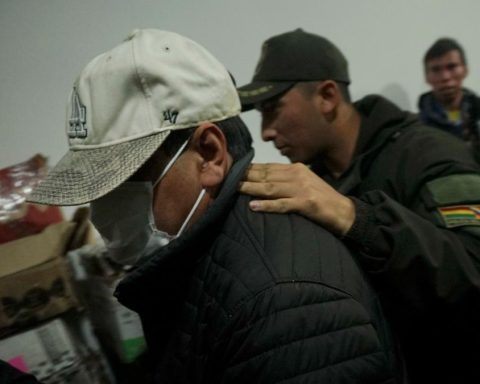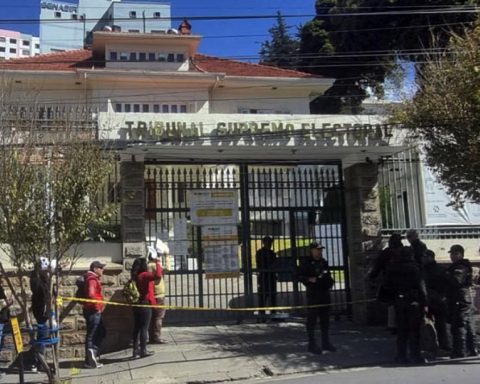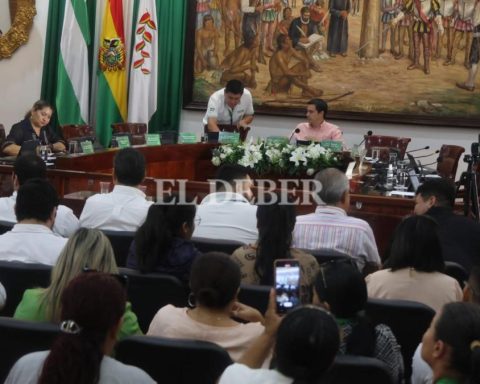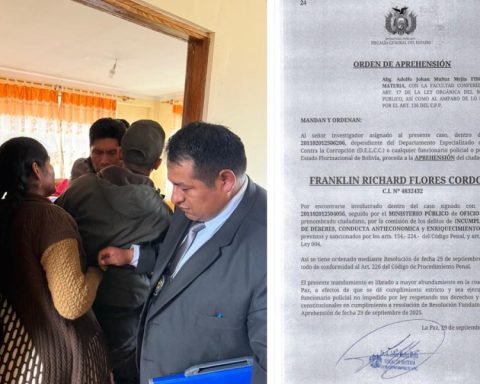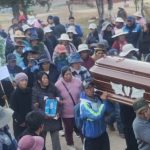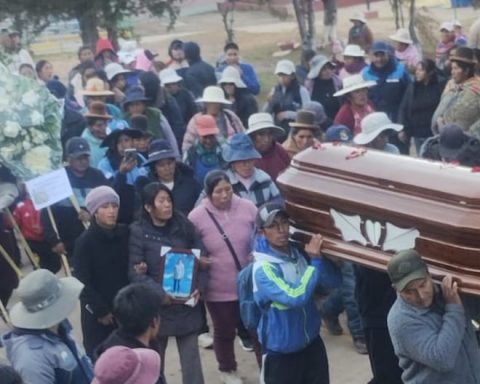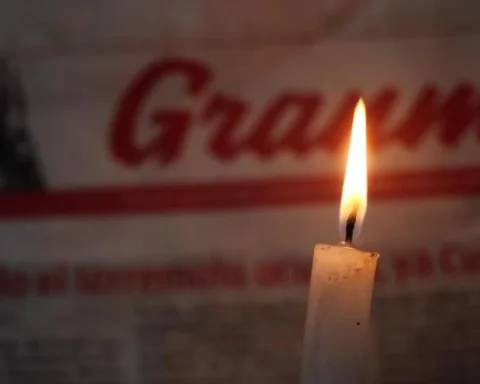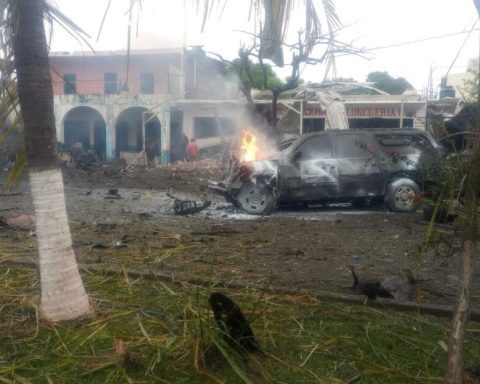May 14, 2024, 3:40 PM
May 14, 2024, 3:40 PM
In an old Rio de Janeiro railway station Food, water bottles and clothing are piled up: they are donations that demonstrate the wave of solidarity that the climate catastrophe aroused in the south of Brazil, for once united despite political polarization.
“It’s tremendously sad, devastating”Natalia Maria Montenegro Cardoso tells AFP while unloading about twenty packs of water bottles from her car in the populous Gamboa neighborhood, near the port of Rio.
The tragedy that hits the inhabitants of Rio Grande do Sul It moves the entire country. The balance, which is still provisional, adds up to some 150 dead, more than a hundred missing, 600,000 people forced to leave their homes and enormous material losses after two weeks of flooding.
“Tomorrow, we will bring food for the animals and blankets“says Montenegro Cardoso, a 30-year-old health worker, who took up a collection among her colleagues.
In the facilities of the old station, at the foot of a favela, the NGO Açao da Cidadania (Citizen Action) receives donations from individuals and companies, delivered in an incessant traffic of cars and vans.
“The mobilization is still very large,” underlines Rodrigo Fernandes Afonso, president of this NGO, deeply rooted in the country. The organization has so far raised about 15 million reais ($2.9 million) and received about 3,500 tons in donations.
This is just one of the countless initiatives launched by associations, people and public organizations.
The state of Rio Grande do Sul launched a fundraising campaign. On Tuesday, it reported that it has so far received nearly 98 million reais ($19 million) in cash contributions sent through Pix, a popular instant payment app.
Leftist President Luiz Inácio Lula da Silva celebrated on the social network X the “largest donation movement ever recorded in the history” of Brazil.
His government also sent aid to the regiondeployed soldiers and rescuers, and adopted legislative measures such as exceptional financial resources and the cancellation of Rio Grande do Sul’s debt for three years.
But the most impressive thing is the mobilization of civil society.
The world of football, led by stars such as Vinicius Junior, Neymar and Ronaldinho, born in the affected region, called for donations and provided private planes to deliver aid.
In Rio, the statue of Christ the Redeemer was illuminated with messages of support for the victims.
In Porto Alegre, capital of Rio Grande do Sul, There are numerous volunteers on the still flooded streets or in shelters, AFP noted.
“The solidarity is impressive,” says Tauane Bassoler, 26, while folding clothes in a sports complex transformed into a shelter.
It is a “moment of national unity,” says political scientist André César, who describes it as a “reunion of Brazilians” in solidarity with the victims.
A symbol of this unity is the cooperation shown between Lula and the opposition Eduardo Leite, governor of Rio Grande do Sul, which reiterates the need to put aside partisan divisions in the face of disaster.
But the wave of solidarity with the south does not erase the fractures, in a country deeply polarized after four years of presidency of the far-right leader Jair Bolsonaro (2019-2022).
Legislators from his party have criticized the government for a response they consider too slow or insufficient.
And on social networks the authorities face a wave of criticism and false information.
“There is a general feeling of solidarity and, at the same time, a feeling of political division,” says Sergio Praça, political analyst at the Getulio Vargas Foundation.
What is also at stake is the positioning against climate change.
According to experts, the torrential rains in southern Brazil They are related to global warming, as well as to the El Niño climate phenomenon.
“We had four years of a tremendously denialist government in relation to climate change,” Praça emphasizes. “His supporters are not going, now, to admit that they were wrong, and that clouds the solidarity actions a bit.”
